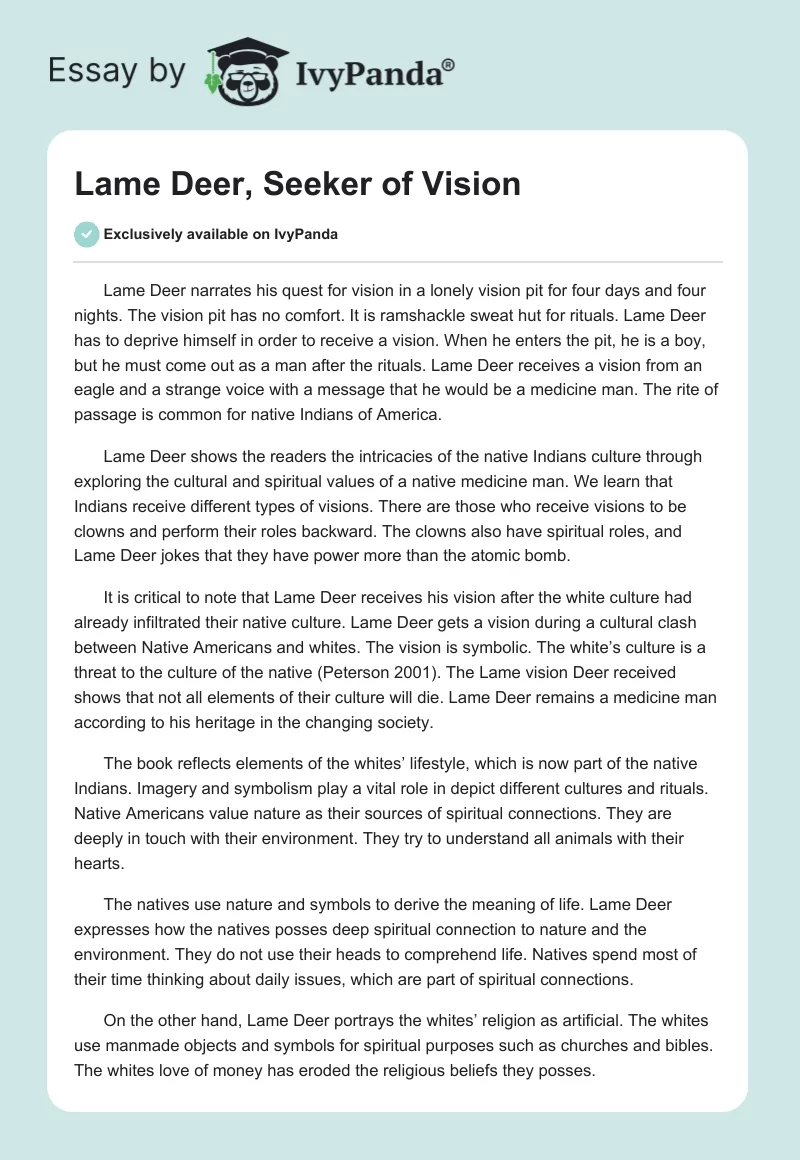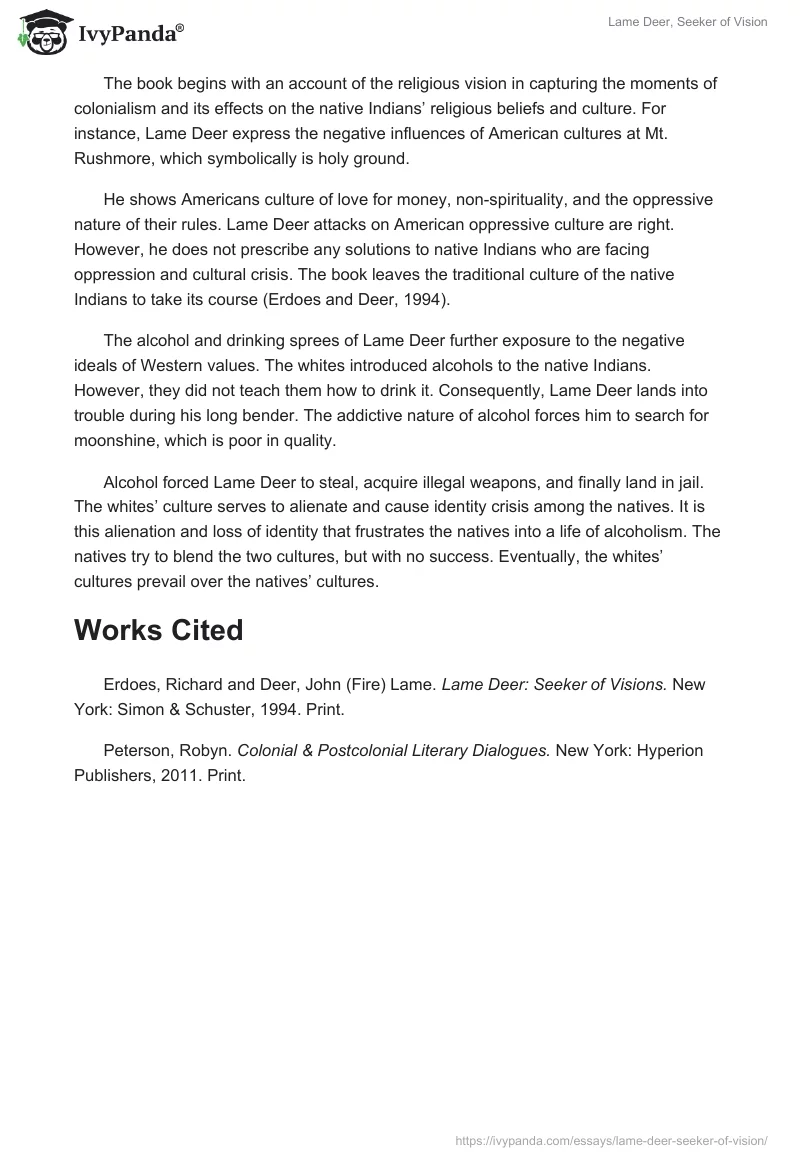Lame Deer narrates his quest for vision in a lonely vision pit for four days and four nights. The vision pit has no comfort. It is ramshackle sweat hut for rituals. Lame Deer has to deprive himself in order to receive a vision. When he enters the pit, he is a boy, but he must come out as a man after the rituals. Lame Deer receives a vision from an eagle and a strange voice with a message that he would be a medicine man. The rite of passage is common for native Indians of America.
Lame Deer shows the readers the intricacies of the native Indians culture through exploring the cultural and spiritual values of a native medicine man. We learn that Indians receive different types of visions. There are those who receive visions to be clowns and perform their roles backward. The clowns also have spiritual roles, and Lame Deer jokes that they have power more than the atomic bomb.
It is critical to note that Lame Deer receives his vision after the white culture had already infiltrated their native culture. Lame Deer gets a vision during a cultural clash between Native Americans and whites. The vision is symbolic. The white’s culture is a threat to the culture of the native (Peterson 2001). The Lame vision Deer received shows that not all elements of their culture will die. Lame Deer remains a medicine man according to his heritage in the changing society.
The book reflects elements of the whites’ lifestyle, which is now part of the native Indians. Imagery and symbolism play a vital role in depict different cultures and rituals. Native Americans value nature as their sources of spiritual connections. They are deeply in touch with their environment. They try to understand all animals with their hearts.
The natives use nature and symbols to derive the meaning of life. Lame Deer expresses how the natives posses deep spiritual connection to nature and the environment. They do not use their heads to comprehend life. Natives spend most of their time thinking about daily issues, which are part of spiritual connections.
On the other hand, Lame Deer portrays the whites’ religion as artificial. The whites use manmade objects and symbols for spiritual purposes such as churches and bibles. The whites love of money has eroded the religious beliefs they posses.
The book begins with an account of the religious vision in capturing the moments of colonialism and its effects on the native Indians’ religious beliefs and culture. For instance, Lame Deer express the negative influences of American cultures at Mt. Rushmore, which symbolically is holy ground.
He shows Americans culture of love for money, non-spirituality, and the oppressive nature of their rules. Lame Deer attacks on American oppressive culture are right. However, he does not prescribe any solutions to native Indians who are facing oppression and cultural crisis. The book leaves the traditional culture of the native Indians to take its course (Erdoes and Deer, 1994).
The alcohol and drinking sprees of Lame Deer further exposure to the negative ideals of Western values. The whites introduced alcohols to the native Indians. However, they did not teach them how to drink it. Consequently, Lame Deer lands into trouble during his long bender. The addictive nature of alcohol forces him to search for moonshine, which is poor in quality.
Alcohol forced Lame Deer to steal, acquire illegal weapons, and finally land in jail. The whites’ culture serves to alienate and cause identity crisis among the natives. It is this alienation and loss of identity that frustrates the natives into a life of alcoholism. The natives try to blend the two cultures, but with no success. Eventually, the whites’ cultures prevail over the natives’ cultures.
Works Cited
Erdoes, Richard and Deer, John (Fire) Lame. Lame Deer: Seeker of Visions. New York: Simon & Schuster, 1994. Print.
Peterson, Robyn. Colonial & Postcolonial Literary Dialogues. New York: Hyperion Publishers, 2011. Print.


